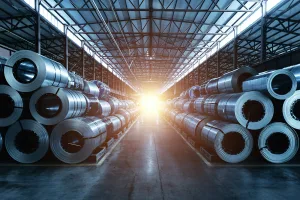How Do Fluctuations in Global Steel Prices Affect Hong Kong’s Market?

Hong Kong, a vital hub for trade and commerce, is significantly influenced by global steel price fluctuations. As a key material for construction and manufacturing, changes in steel prices can ripple through the economy, impacting everything from project costs to consumer prices. This article explores the various ways in which fluctuations in global steel prices affect Hong Kong’s market, highlighting the implications for various sectors and the overall economy.
1. Understanding the Steel Price Landscape
Global steel prices are influenced by a myriad of factors, including supply chain disruptions, trade policies, and changes in demand from major markets like China and the United States. These fluctuations can lead to significant price volatility, which directly affects regions like Hong Kong that heavily depend on imported steel.
2. Impact on Construction Costs
A. Rising Material Costs
When global steel prices rise, the cost of construction materials in Hong Kong follows suit. This increase can strain budgets for public infrastructure projects and private construction initiatives alike. Developers may face difficult decisions regarding project scope and timelines, often leading to delays and potential cancellations.
B. Increased Housing Prices
Higher steel prices contribute to rising housing costs in Hong Kong, which is already one of the most expensive real estate markets in the world. As construction costs escalate, developers may pass these costs onto consumers, exacerbating housing affordability issues and impacting overall market demand.
3. Effects on the Manufacturing Sector
A. Production Costs and Profit Margins
Manufacturers in Hong Kong that rely on steel as a primary input face rising production costs during periods of price increases. These rising costs can squeeze profit margins, leading companies to either absorb the costs or pass them on to consumers. This scenario may lead to inflationary pressures in the market, affecting consumer purchasing power.
B. Supply Chain Disruptions
Fluctuating steel prices can cause supply chain disruptions, as manufacturers may struggle to secure materials at stable prices. This volatility complicates inventory management and production planning, leading to inefficiencies and increased operational costs.
4. Impact on Trade and Competitiveness
A. Export Competitiveness
Hong Kong’s manufacturers face challenges in maintaining competitiveness in the regional and global markets when steel prices are volatile. If local producers cannot manage their costs effectively, they risk losing market share to competitors in other regions that may have more stable pricing and supply conditions.
B. Import Costs and Trade Balances
As global steel prices fluctuate, the cost of imports can change significantly. This variability can impact Hong Kong’s trade balance, as higher import costs for steel can increase the overall cost of goods sold, affecting the profitability of local businesses that rely on imported materials.
5. Economic Implications
A. Inflationary Pressures
Rising steel prices can contribute to broader inflationary pressures in Hong Kong’s economy. As construction and manufacturing costs increase, businesses may pass these costs onto consumers, leading to higher prices across various sectors and reducing overall economic growth.
B. Impact on Investment Decisions
Investors closely monitor steel price fluctuations, as these can indicate broader economic trends. Uncertainty in steel prices may lead to hesitancy in making long-term investments in construction and manufacturing sectors, impacting overall economic confidence and growth.
6. Strategic Responses to Price Fluctuations
A. Diversifying Supply Sources
To mitigate the risks associated with fluctuating steel prices, many businesses in Hong Kong are diversifying their supply sources. By sourcing steel from multiple regions, companies can reduce their reliance on any single market and enhance their supply chain resilience.
B. Adopting Cost-Effective Technologies
Investing in innovative technologies and production methods can help manufacturers manage rising steel costs. By improving efficiency and reducing waste, companies can offset some of the impacts of fluctuating material prices and maintain competitiveness in the market.
Conclusion
Fluctuations in global steel prices have significant implications for Hong Kong’s market, affecting construction costs, manufacturing sectors, and overall economic stability. By understanding these dynamics, stakeholders can better navigate the challenges posed by price volatility and implement strategies to mitigate its impacts. As Hong Kong continues to adapt to an ever-changing global landscape, fostering resilience in the face of these fluctuations will be crucial for sustained economic growth and competitiveness.




